It boggles our minds how little Fallas is known outside Spain, and how little media coverage this festival (one of the world’s largest) receives.
There are different speculations on how Fallas originated, but we tend to believe that it started as a way to mark the beginning of Spring, and celebrate renewal.
That’s also the explanation given by both the Fallas Museum and Wikipedia:
One theory suggests that the Falles [Falles = Valencian spelling of Fallas] started in the Middle Ages, when artisans put out their broken artifacts and pieces of wood that they sorted during the winter then burnt them to celebrate the spring equinox. Valencian carpenters used planks of wood to hang their candles on. These planks were known as parots. During the winter, these were needed to provide light for the carpenters to work by. With the coming of the Spring, they were no longer necessary, so they were burned. With time, and the intervention of the Church, the date of the burning of these parots was made to coincide with the celebration of the festival of Saint Joseph, the patron saint of the carpenters.
Does that sound boring? Well, it’s not. The influence of Fallas can be felt in Valencia constantly, with small and big events taking place throughout the year.
Fallas officially starts on the last Sunday of Feburary with La Despertà, a parade meant to awaken the city. Our first year in Valencia, we lived along the parade route and didn’t know anything about it. Shaken out of bed by thunderous explosions at 7:30am, we thought WWIII had just broken out. This year we were prepared.
Later that evening, La Cridà, the official opening ceremony of Fallas, is held at Torres de Serrano.
Things calm down, then, until the first of March, when the daily mascletàs in Plaza del Ayuntamiento begin. Throughout March, events take place every day but the main festivities don’t get underway until the 15th: the day of La Planta. During La Planta, hundreds of Fallas commissions set up their figurines throughout the city.
If you truly want to experience Fallas, come from the 15th to the 19th. You’ll need all five days.
In 2009, there were over 600 figures spread across Valencia. They’re of varying sizes, from small to absolutely mammoth: 2009’s most expensive figure, Nou Campanar’s prize winning ode to the world of fashion, cost over a million dollars. From the 15th to the 19th the city finds itself in a permanent state of madness. Fireworks, parades, music, street parties, mascletàs, ninots, paella, liquor and insomnia.
Fallas comes to an end on 19th of March, during an event known as La Cremà. Starting at midnight, all the Fallas figures are burned to the ground. The whole city seems to be in flames, and the huge bonfires on almost every block make for a surreal experience. By the next morning, everything’s cleaned up and back to normal — you’ll find yourself walking the city streets, wondering if everything was just a dream.
Although the only way to truly understand the insanity which grips the city in March is to experience, here are a few posts we’ve done on Fallas, containing a lot of photos and videos, which might help explain it a little better:
- Exposicio Del Ninot
- La Despertà
- First 2pm Mascletà of the Fallas season
- La Cridà – Opening Ceremony of Fallas ( Video )
- Pilota Finals
- Cant de l’Esoreta (children’s costume parade)
- March 1st Mascletà
- Paella cooking competitions in the street
- Color Mascletà
- Beach Mascletà – Grand Mascletà Napolitana (highly recommended)
- Street Lights of Calle Seuca
- Tapas Festival during Fallas
- Buñuelos (an absolute must during Fallas)
- Bullfights (Fallas is also main bullfight season in Valencia)
- La Plantà and Map of all main Fallas figures of 2009
- First Fallas Firework
- Flower Offering to the Virgin
- Nit de Foc (the best fireworks of Fallas)
- Street Mascletà
- Last Mascletà of Fallas (the final mascletà is the most highly anticipated)
- Cabalgata del Fuego
- La Cremà
The End!
It’s a fun time of year, but so exhausting and I’m never sad when it’s over. Still… I have to admit that writing this has made me super excited for Fallas 2010!
Here are some tips for getting the most out of Fallas. First off: this festival is not for everyone. If you can’t tolerate noise and firecrackers, then you’d be well advised to stay away. As a matter of fact, many Valencians detest Fallas and vacate the city as the hordes of revelers arrive. Before I moved to Valencia I wasn’t much of a firecrackers fan, but you get used to them. Especially after that first mascletà!
About mascletàs: Don’t go if you have problems with your ears. They’re extremely loud, even if you’re prepared. If you’re unsure whether you’ll like it, I recommend watching from the northern end of Plaza de l’Ayuntamiento. You can always get closer. If you’re a daredevil or hate your eardrums, show up 20 minutes before 2pm and claim a front-row spot. Actually, for the last 5 mascletàs, make that an hour early — these are the most popular and the plaza will be packed.
Be warned of Street Mascletàs!!!! These are smaller and look less threatening than the large city-sponsored ones, but they are far more intense. Long pants to protect yourself from shrapnel (really!) and sunglasses aren’t a bad idea. Above all — if it gets too loud, don’t stick your finger in your ears. This prevents the regulation of air pressure and could damage your eardrum. The trick is to cover your whole ear with your hand and keep your mouth slightly open.
Try to take a siesta. After the 2pm Mascletà, eat and rest up so you’re ready to go out again around 6. With luck, you’ll have energy enough to stay out until the early morning hours — just like a real Valencian!
Don’t wait around until the last minute to find accommodation. Prices climb as the festival nears — for example we saw a single dorm room bed being sold for €150 per person per night.
If you’ve got questions, concerns or additions for this post feel free to leave a comment or email us via our contact form.
Now here are some additional random pictures of Fallas 2009 which haven’t yet been published:
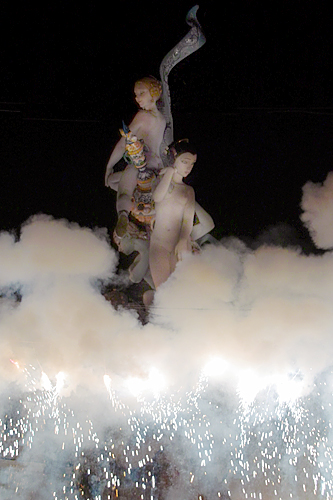
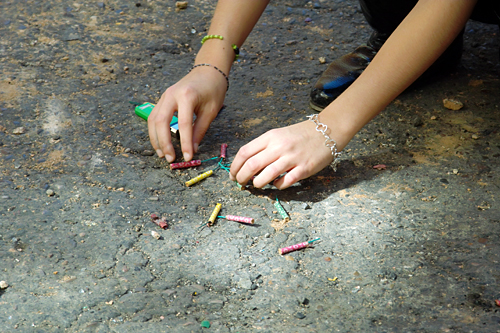
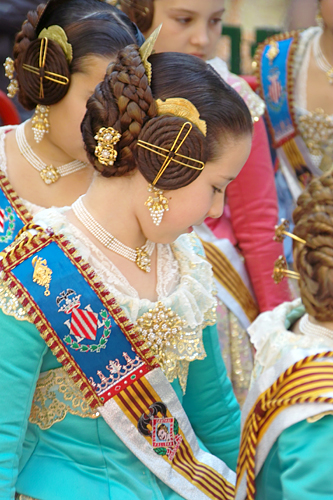
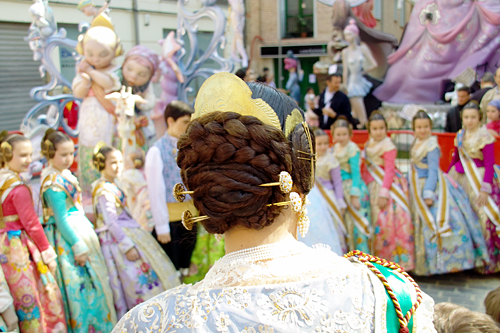

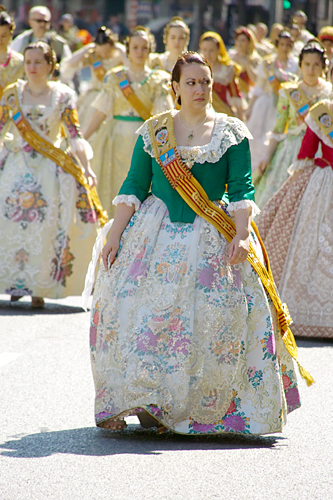
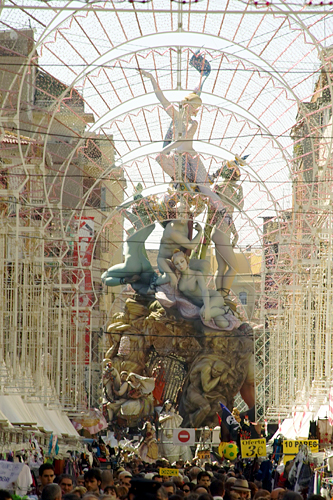
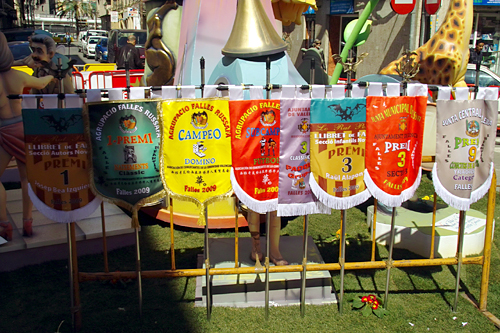
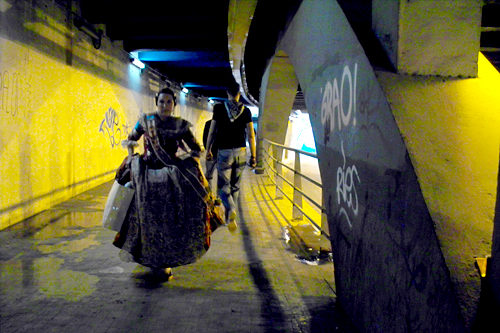


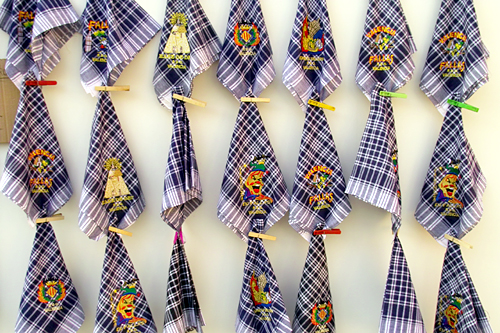

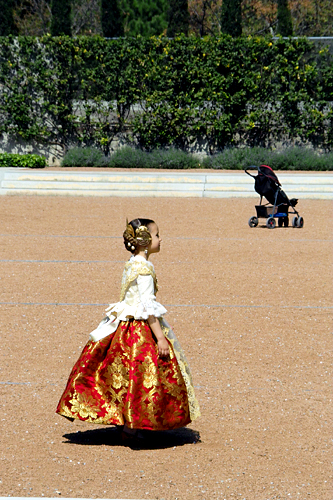
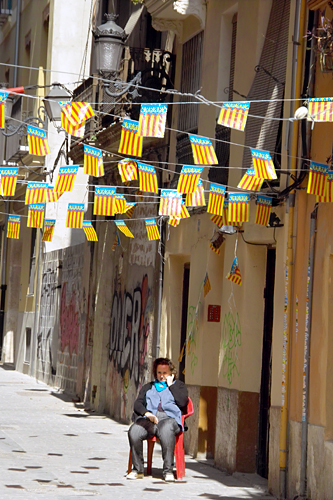

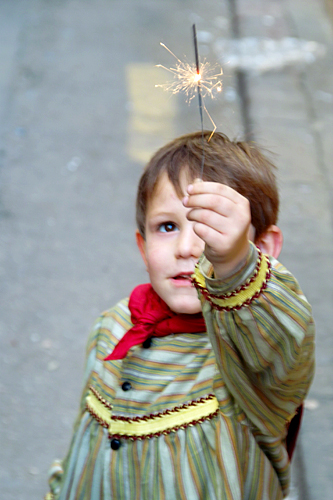
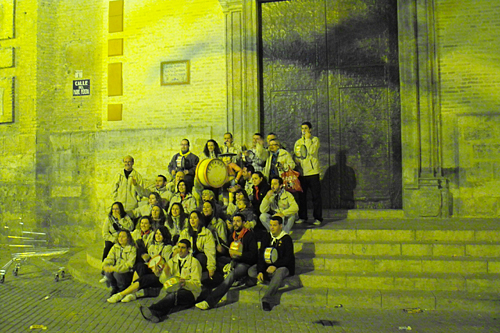

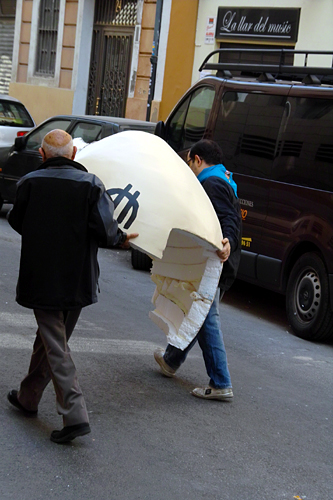
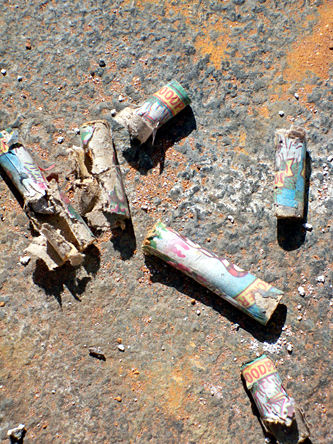

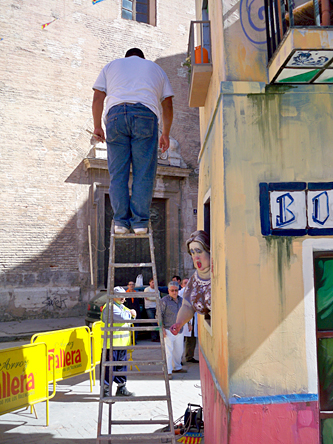
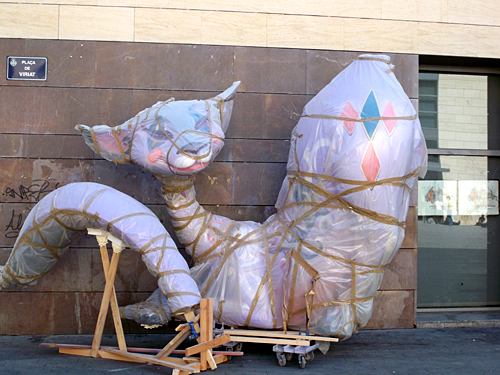
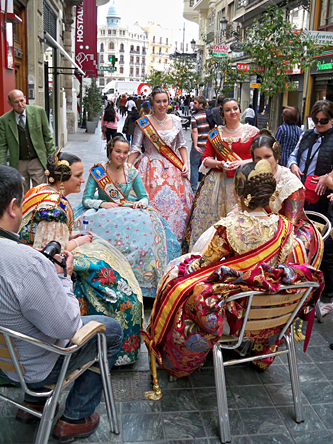
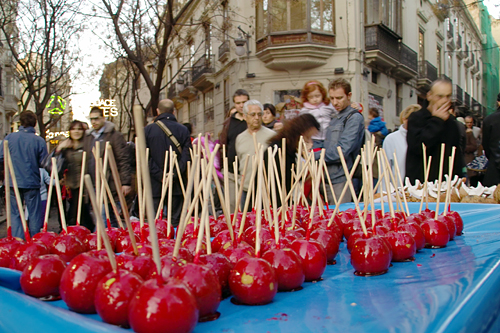
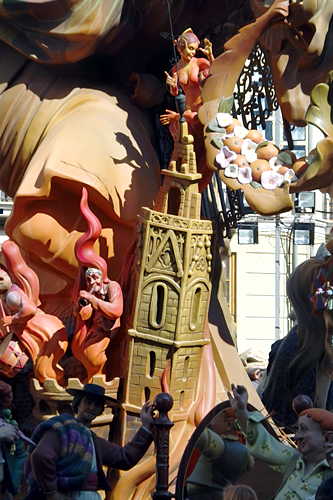
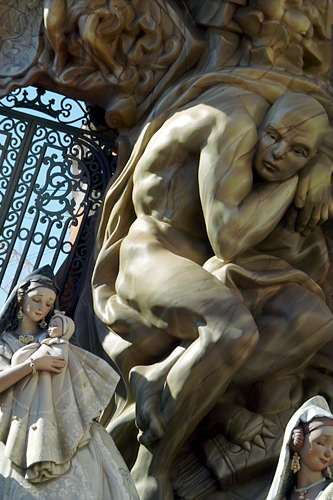

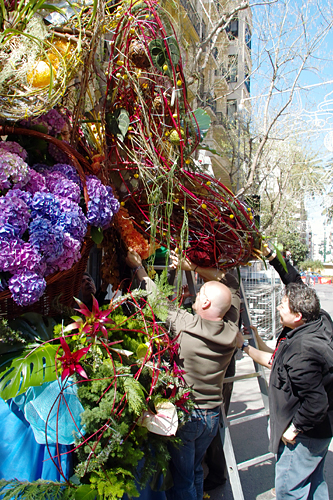
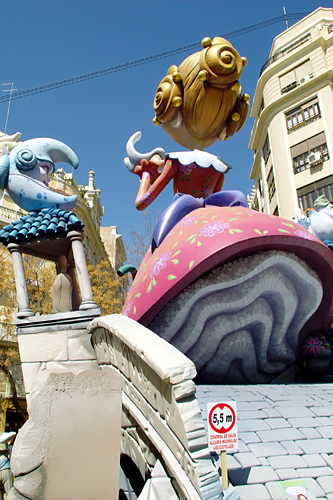
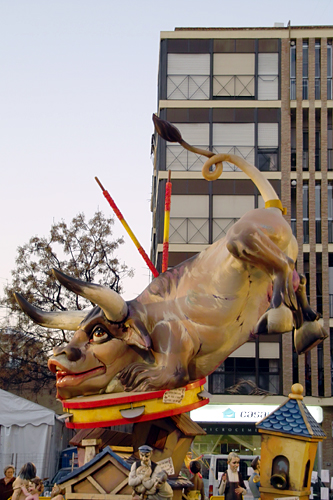
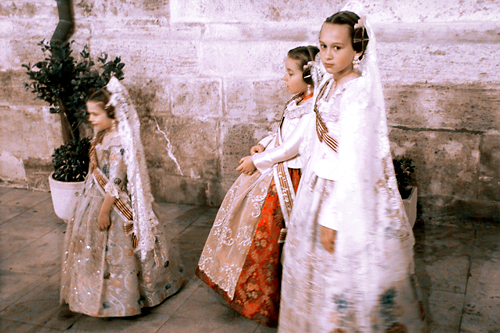
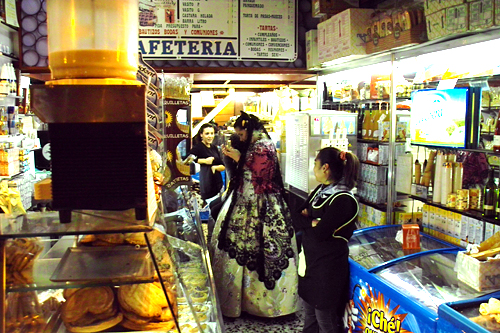
Pingback: F*ck St. Patrick’s Day, here is Fallas! - Attuworld.com
Pingback: Explain Fallas! WTF Festival in Valencia Spain | Random Good Stuff
Pingback: Was ist Fallas? | Totalblogal
Pingback: From Japan to Valencia for Fallas | Hola Valencia Blog
Pingback: Despertà 2009 — Welcome to Hell, Kid | Hola Valencia Blog
Pingback: Forever Wedding Entrance | Random Good Stuff
Pingback: Wilder Hochzeits Hip Hop | Totalblogal
Pingback: Who will be Fallera Mayor for Fallas 2010? | Hola Valencia Blog
Pingback: Schumacher bei der Formel 1 in Valencia sehen | Totalblogal
Pingback: Dogs Fireworks Noise Anxiety Vest | Random Good Stuff
Pingback: La Tomatina | Totalblogal
Pingback: The Real Truman Show | Random Good Stuff
Pingback: War Criminal Arrested in Valencia | Hola Valencia Blog
Pingback: Ruzafa Youth Hostel in Valencia | Hola Valencia Blog
Pingback: Absolut geiles Feuerwerk | Totalblogal
Pingback: Welcome the Fallera Mayor of 2010! | Hola Valencia Blog
Pingback: Budget Boutique Hotel: Acta Del Carmen | Hola Valencia Blog
We’ve been to Las Fallas in 2007 and will be back in 2010 bringing friends. I really enjoy reading Mr. Powell’s writings about Vallencia. The maps of the locations of the Fallas, the articles about resturants and the rest is really big help to this old Iowa farm boy.
Thank you
Iowa Tom
Pingback: Nativity Scene in the Cathedral | Hola Valencia Blog
Pingback: Goodbye Beachside Terraces | Hola Valencia Blog
Pingback: Valencian Vocab: Mascletá | Hola Valencia Blog
Pingback: FALLAS 2010 | Random Good Stuff
Pingback: Dubai Timelapse | Random Good Stuff
Pingback: Stay in Valencia for 11 Euros a night | Hola Valencia Blog
Pingback: The America’s Cup Absolutely Freaking Kills Me | Hola Valencia Blog
Pingback: 2010 Ninot Exhibition | Hola Valencia Blog
There is a very very old celt tradition to celebrate the summer solstice were you burn everything old to greet the new things. (some kind of new year celebration but before summer) Here in Alicante we do exactly the same thing as in “Fallas” but based in the old celts tradition. More paganistic fun, if you like fallas and want twice in a year. Come to see us in Alicante (2h by car to the south from Valencia). Of course, ours are better 😛
Rico,
yeah, we want to cover that event as well and we have heard that burning your figures is a little bit better for your health.
Do you have any connection to commissions or the tourist office there. We would like to make the best out of it while there.
Pingback: In need for a Sponsor for Fallas
Pingback: Pelota, Cabalgata, Mascletà: A Busy Sunday
Pingback: Craziest and most Insane Firework you will ever see!!!
Pingback: Fallas 2010: Die Despertà « Valencia Blog
Pingback: Fallas 2010: Upcoming Events
Pingback: Fallas 2010: Calle Sueca Prepares
Pingback: Sanyo VPC – CS1 HD Camera Test
Pingback: 32nd Annual Antique Book Fair on Gran Vía
Pingback: Fallas 2010: Cant de L’Estoreta
Pingback: DVD Report – March 9th
Pingback: Fallas Festival in Valencia Spain | Misadventures with Andi
Pingback: Fallas 2010: L’Antiga de Campanar – 12th Place
Pingback: This Was Fallas 2010
Pingback: I’m glad Ohio is picking up Valencia’s Fallas tradition
Pingback: San Mateo Has Arrived | For 91 Days
Pingback: The 60th Day of America | For 91 Days
Pingback: The Face of Argentina | For 91 Days in Buenos Aires
Pingback: Buenos Aires – A World Unto Itself | For 91 Days in Buenos Aires
Pingback: Fiesta in Independencia! Part 1 of 2 | For 91 Days in Bolivia – Travel Blog